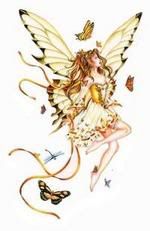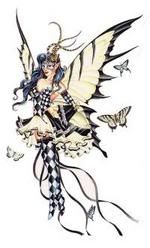Post by Admin Kelly on Jul 25, 2006 11:16:40 GMT -5
I found this and thought it was interesting

Just how many transgendered people are there, anyway?
This study will shed some light on this question.
First we need to understand what it means to be transgender.
According to Harry Benjamin, in his book 'The Transsexual Phenomenon', there are different degrees of being transgender.
This is illustrated by the different colors in the picture.
Most people are 'not transgender' at all (purple.)
Some people have only cross dressed occasionally, as for Halloween (blue.)
Others cross dress regularly, but only with a few garments at a time (green.)
Another group cross dresses regularly and completely, but only some of the time (yellow.)
The next group lives full time in the opposite gender role from their birth sex, and may have had hormones, but has not had surgery (orange.)
The 'post-op' group has completed surgery (red.)
The numbers to the right (0 through 7) represent degrees of transgender on the Benjamin Scale, described in 'The Transsexual Phenomenon'
This 'ice cream cone' slide shows the 'tip of the iceberg' nature of transgenderism. Only a few people are post-op (the visible 'tip of the iceberg,' in red above) and a few more have transitioned (orange.)
There are a lot of people in the closet, representing the blue, green, and yellow bands.
According to the Janus Report on Sexual Behavior (1993,) 6% of males and 3% of females have crossdressed at least once.
This could mean any of the transgender categories, leaving 94% of men and 97% of women who are not transgender.
Until now, few numbers were available for the other five categories above.
==========================================
Any thoughts anyone?...................
To get the full story click here www.tgender.net/taw/thbcost/img0.html

Just how many transgendered people are there, anyway?
This study will shed some light on this question.
First we need to understand what it means to be transgender.
According to Harry Benjamin, in his book 'The Transsexual Phenomenon', there are different degrees of being transgender.
This is illustrated by the different colors in the picture.
Most people are 'not transgender' at all (purple.)
Some people have only cross dressed occasionally, as for Halloween (blue.)
Others cross dress regularly, but only with a few garments at a time (green.)
Another group cross dresses regularly and completely, but only some of the time (yellow.)
The next group lives full time in the opposite gender role from their birth sex, and may have had hormones, but has not had surgery (orange.)
The 'post-op' group has completed surgery (red.)
The numbers to the right (0 through 7) represent degrees of transgender on the Benjamin Scale, described in 'The Transsexual Phenomenon'
This 'ice cream cone' slide shows the 'tip of the iceberg' nature of transgenderism. Only a few people are post-op (the visible 'tip of the iceberg,' in red above) and a few more have transitioned (orange.)
There are a lot of people in the closet, representing the blue, green, and yellow bands.
According to the Janus Report on Sexual Behavior (1993,) 6% of males and 3% of females have crossdressed at least once.
This could mean any of the transgender categories, leaving 94% of men and 97% of women who are not transgender.
Until now, few numbers were available for the other five categories above.
==========================================
Any thoughts anyone?...................
To get the full story click here www.tgender.net/taw/thbcost/img0.html




